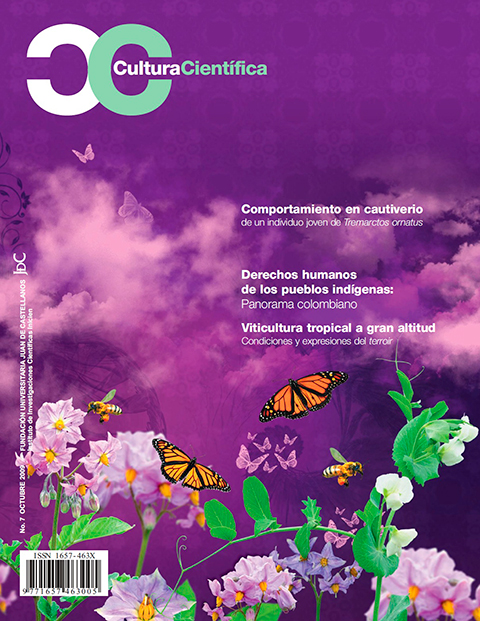Keywords:
Fasciola hepática, trematodes, hepaticcirrhosis, bovine, colla-genitis.Abstract
Fasciolosis is a type of parasitism, caused by the trematodes Fasciola hepa-tica that uses mollusks lymneids as intermediate hosts. This parasite is widely distributed in the region and the country; its diagnosis is routinely performed through coprologic techniques applied to parasited vertebrates, consisting of egg detection in feces. The most commonly used, due to its brevity and low cost is the Dennis technique. This coprologic technique is based on the principle of eggs sedimentation. Therefore, it depends on their outflow in the faecal matter, which makes it little sensitive for the parasite detection. Consequently, this study makes a comparison between the finds in the liver of slaughtered cattle of the plant Matadero in Tunja and the results of the Dennis technique, practiced in faecal samples of the same animals. The procedure was developed in a laboratory, getting data that indicates that the Dennis technique is not sensitive enough to the Fasciola hepatica diagnosis and its continuous use must be evaluated.
Downloads
References
CORDERO, M. y VASQUEZ, R. 2001. Parasitología Veterinaria. Mc Graw Hill Iteramericana España. Edición 2001.
ENCINAS, R. 1998. Frecuencia de la fasciolosis hepática e impacto económico en bovinos sacrificados en Ferreiro. Volumen XX. México.
FREDES, F. et al. 2008. Evaluación diagnostica de fracciones cromatograficas de Fasciola Hepatica mediante Vestenr Blot y Eliza en animales infectados. Aarchivos de Medicina veterinaria, issn 0301- 73 2X.
GORMAN et al. 1991. Inmunodiagnóstico de la fasciolasis animal mediante una prueba inmunoenzimática (ELISA), Parasitología al Día.
GUTIÉRREZ, G. 2004. Fasciolosis bovina. Facultad de Veterinaria Universidad Autónoma de Barcelona, •MELHOM, H. et al. 1994. Manual de parasitología Veterinaria. Editorial presencia ltda.
OLACHEA, F. 1994. Epidemiología y Control de Fasciola hepática.
Enfermedades parasitarias de importancia económica en bovinos.
SOPORRI, H. y STONZI, H. 2000. Fisiopatología Veterinaria. sexta edición. Editorial Acribia. Zaragoza (España).
UENO, A. y GUTIÉRREZ, U. 2003. Manual para diagnóstico de las helmintihosis en rumiantes. Int .Coop. Ag. Japan, Tokio.
VÉLEZ, H. 2002. Fundamentos de Medicina y Enfermedades infecciosas.
C.I.B.
ZIMMERMAN, G. y CLARK, C. 1986. Separation of parasite antigens by molecular exclusion, anion exchange and chromatofocusing utilizing FPLC protein fractionation systems. Veterinary Parasitology





